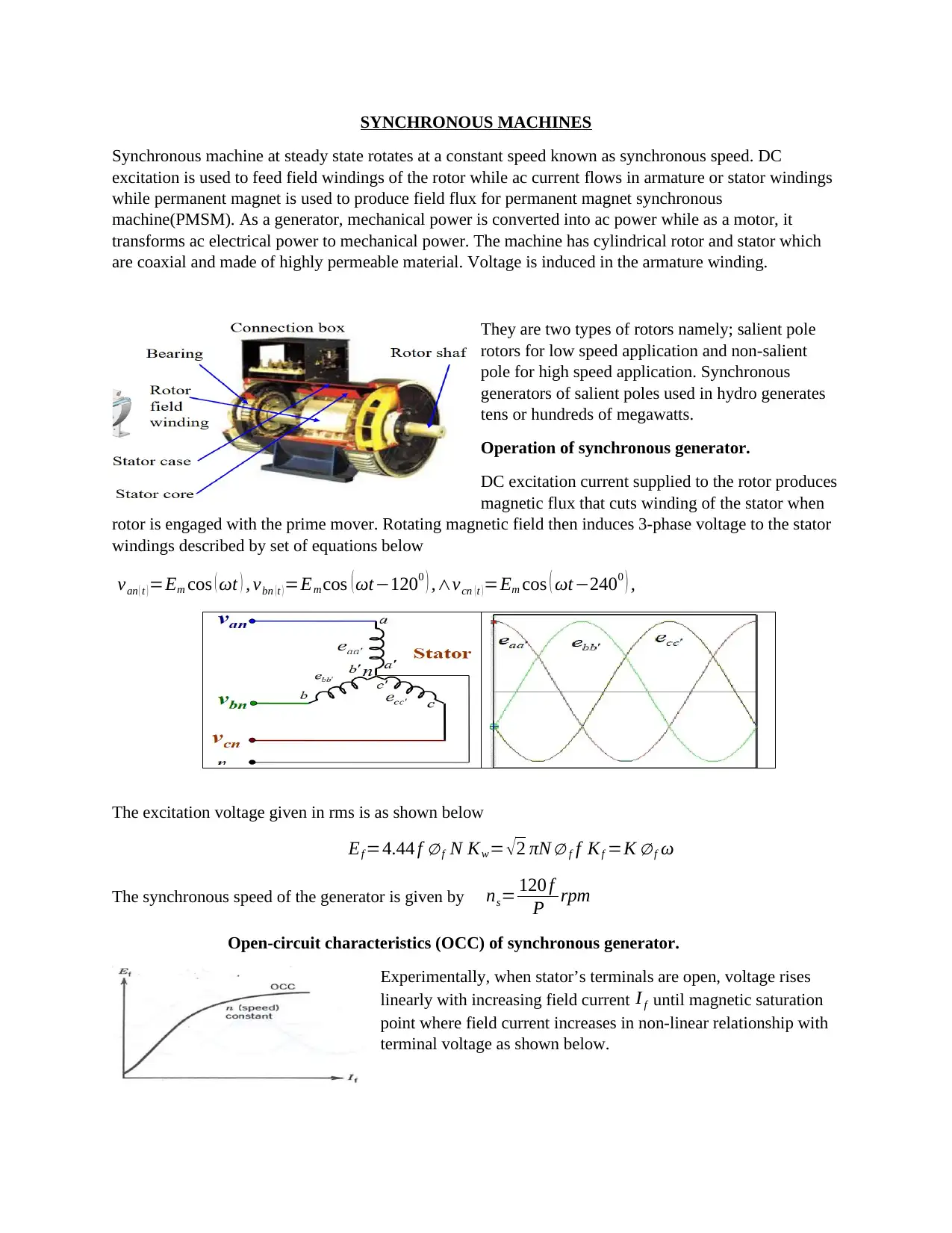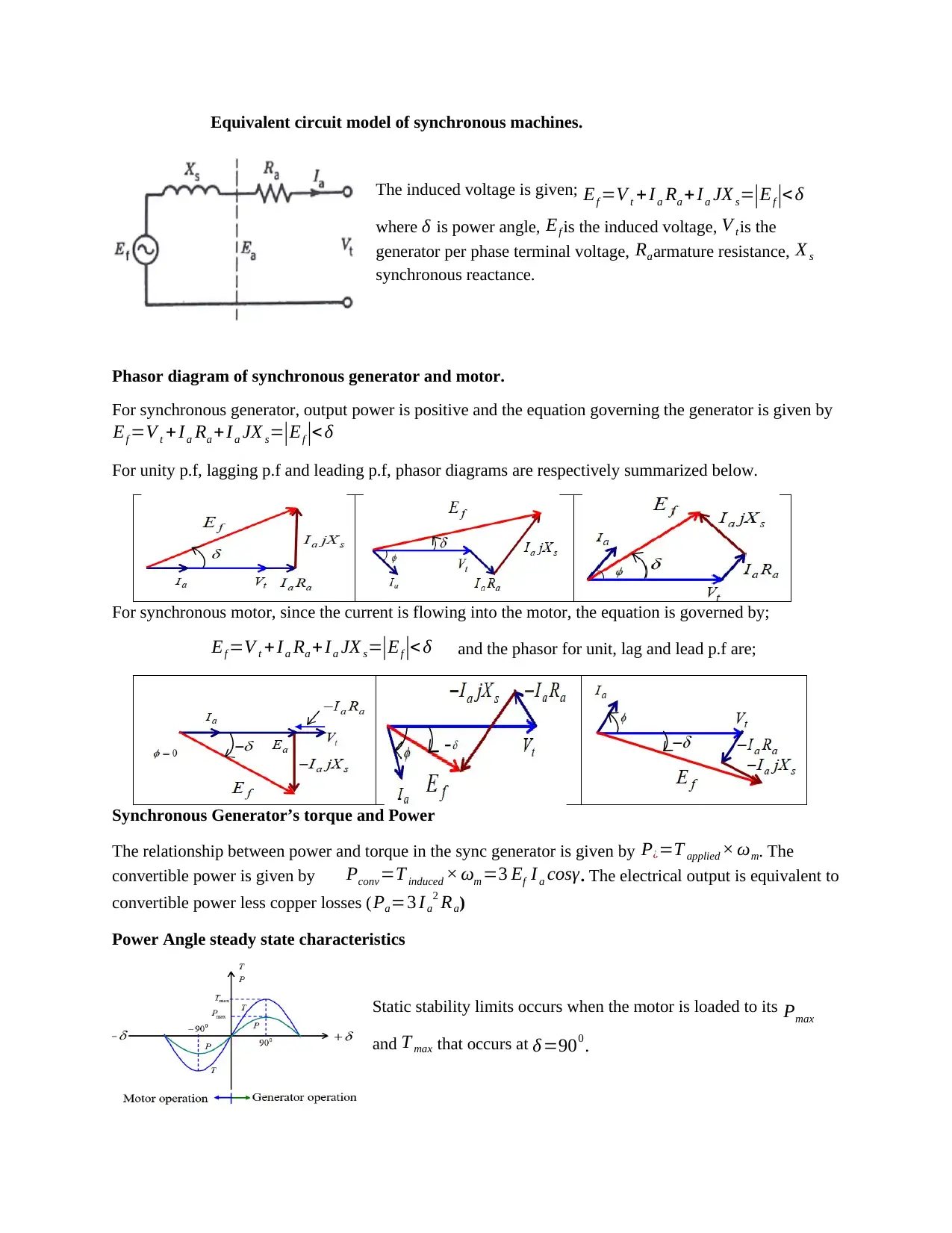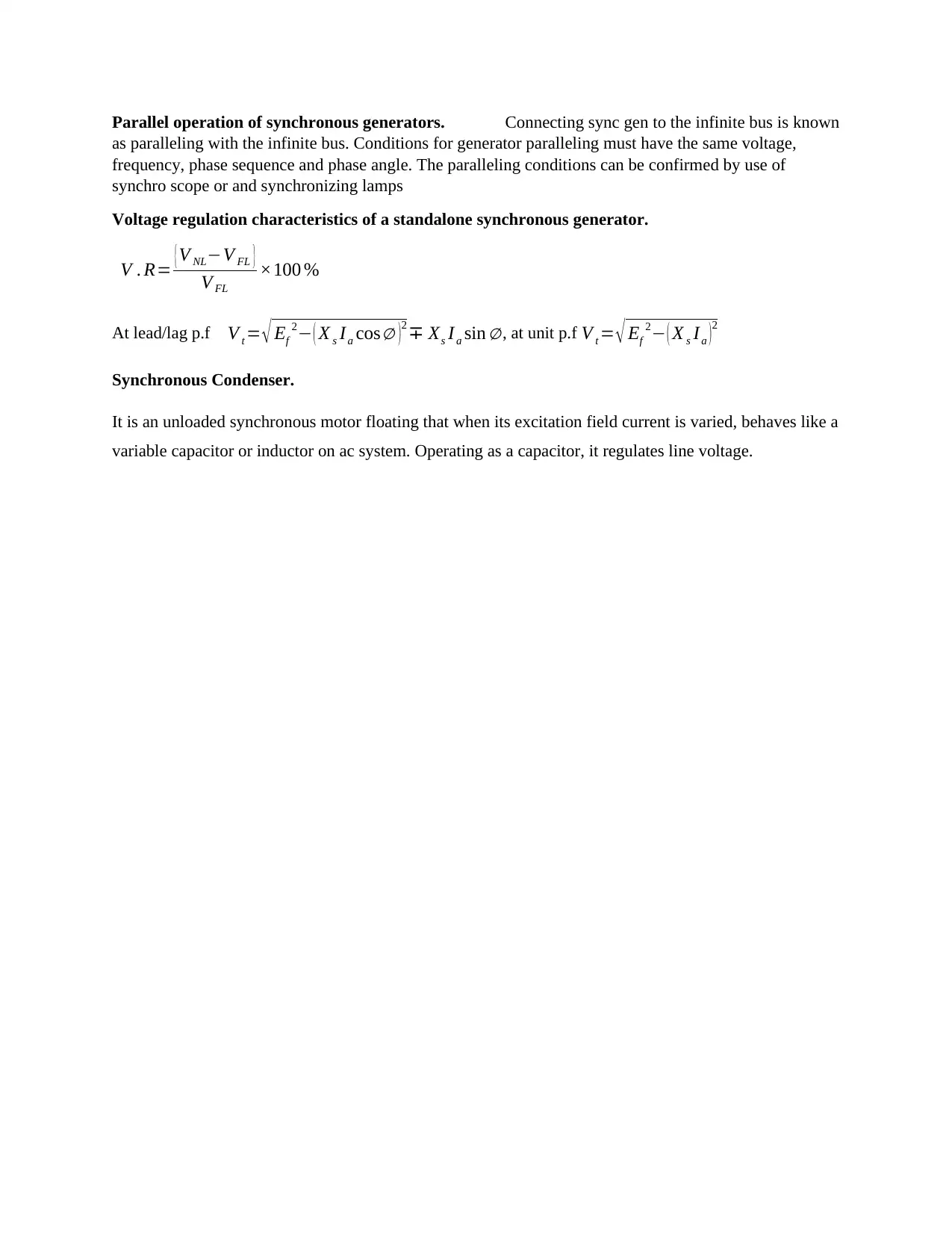Comprehensive Report on Synchronous Machines, FACTS, and HVDC Systems
VerifiedAdded on 2022/11/18
|3
|535
|313
Report
AI Summary
This report provides a comprehensive overview of synchronous machines, FACTS (Flexible AC Transmission Systems) devices, and HVDC (High Voltage Direct Current) systems. It begins by explaining the operational principles of synchronous machines, including their use as generators and motors, detailing their rotor types, and discussing their equivalent circuit models, phasor diagrams, and torque-power relationships. The report also covers generator paralleling and voltage regulation characteristics. The second part delves into FACTS devices, such as SVC (Static Var Compensator) and STATCOM (Static Synchronous Compensator), highlighting their role in enhancing the security, capacity, and flexibility of power transmission networks. Finally, the report introduces HVDC systems, which are used for long-distance power transmission and grid interconnection. The report integrates concepts from the provided assignment brief and supporting documents on AC transmission lines and power flow control, providing a holistic understanding of power system components and control strategies.
1 out of 3









![[object Object]](/_next/static/media/star-bottom.7253800d.svg)